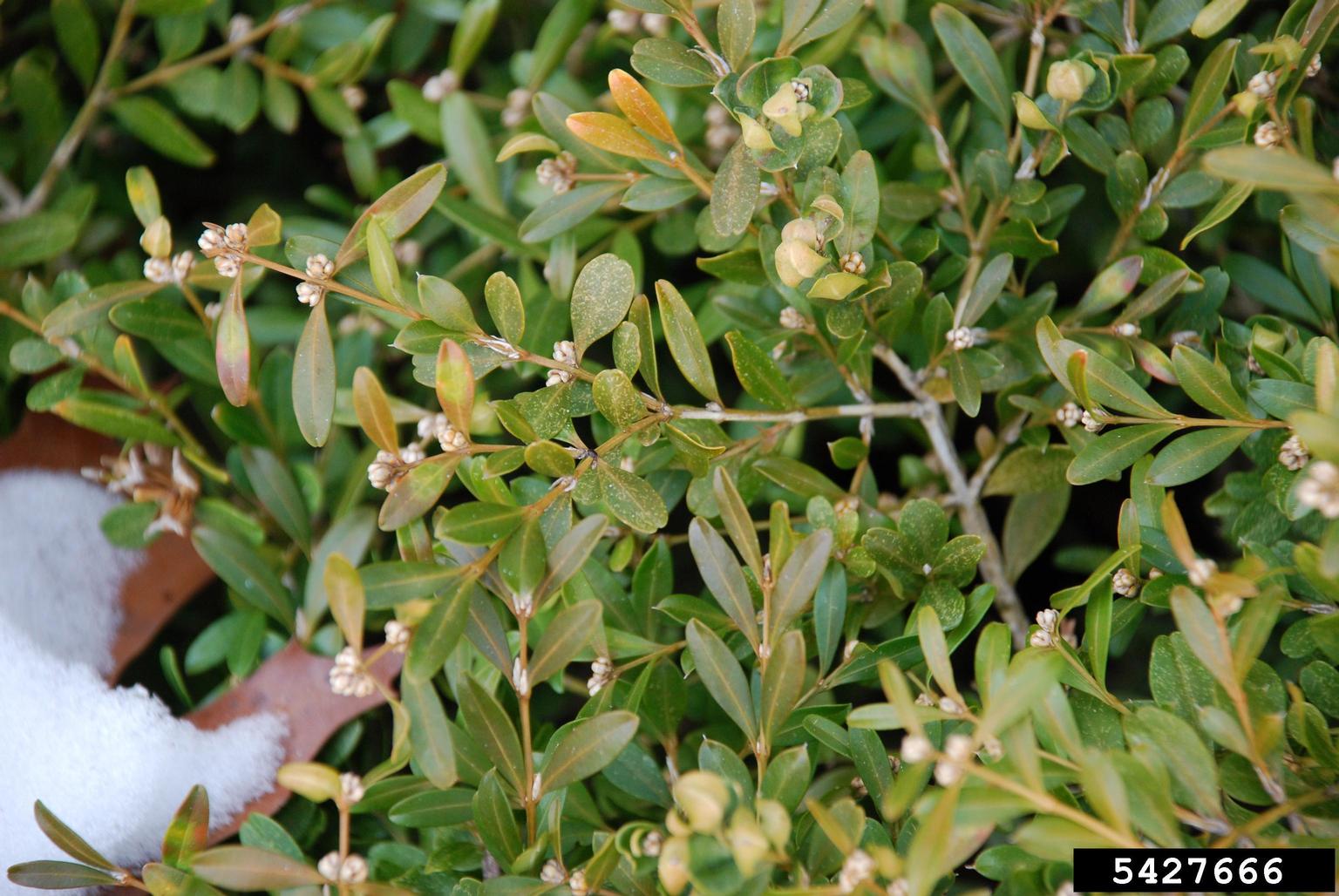Spider Mite Damage On Boxwoods – What Are Boxwood Spider Mites


Boxwoods are landscape darlings due to their compact habit, ease of care, resistance to many diseases and pests, and wide availability and affordability. One of the few insects that can cause issues on these resilient plants is boxwood spider mites. Spider mite damage on boxwoods can be hard to spot at first and, after a long infection, the plant's health can be severely affected by these sucking insects. Here are some tips on how to recognize the pests and how to get rid of spider mites on boxwood.
Life Cycle of Boxwood Spider Mites
Boxwood spider mites overwinter as eggs and hatch and become active in April to early May. They are tiny, spider-like creatures who cause damage when they suck the sap from the leaves of the plant. Their saliva contains a toxin that causes stippling on leaves and, over time, the reduction in sap to the plant will cause a silvery, unhealthy cast on foliage. Treating spider mites on boxwoods needs to start as soon as the pests are observed to save the health of the plant. In order to control the mites, you need to know a bit about their life cycle. These insects overwinter as eggs on the undersides of leaves. When temperatures warm up, they hatch. Adults feed on both surfaces of the leaves of the plant. There can be eight or more generations per season, which can add up to a lot of insects and some potentially serious damage to your plant. The insects are more closely related to spiders and have eight legs, tan to reddish coloring, and bear two large dark patches on their sides.
Spider Mite Damage on Boxwoods
The first sign you have spider mites might be leaf stippling. The upper or lower leaves may bear raised, lighter colored scratches on their surfaces. This is due to the toxins in the mites’ saliva. On severely fed foliage, the color may be brown, but it is usually tan. If feeding activity is accelerated, the leaves may actually start dropping off the plant. The best way to determine if spider mites are doing the damage is by holding a piece of plain paper under the plant and giving the branches a shake. Spider mites will show up on the white paper and can be counted. If each whack of the branch results in 15 or more spider mites, you have a serious problem and boxwood spider mite control is now a necessity.
Treating Spider Mites on Boxwoods
Once you have identified the problem, it's time to ask yourself how to get rid of spider mites on boxwood. There are several biological controls that are natural and non-toxic. These include predators such as:
It can be difficult to seduce these insects to your ailing plant, so a better method of boxwood spider mite control might be horticultural oil. Used in spring and every three weeks, this non-toxic oil can quell populations of spider mites quickly. Insecticidal soaps also have some effectiveness. In especially bad infestations, you may have to resort to a miticide. Use caution and read all instructions before using any chemical-based formula.
Sign up for the Gardening Know How newsletter today and receive a free copy of our e-book "How to Grow Delicious Tomatoes".

Bonnie Grant is a professional landscaper with a Certification in Urban Gardening. She has been gardening and writing for 15 years. A former professional chef, she has a passion for edible landscaping.